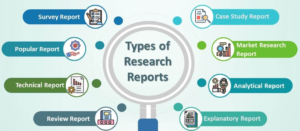Garments and fashion research involves exploring various aspects of the fashion industry, including trends, consumer behavior, design, production methods, sustainability, and market dynamics.
Here’s how we are conducting garments and fashion research effectively
Trend Analysis: Monitor and analyze current and emerging fashion trends in apparel, accessories, colors, fabrics, and styles. Utilize industry publications, trend forecasting agencies, fashion shows, and social media platforms to stay updated on the latest trends.
Consumer Behavior: Conduct market research to understand consumer preferences, purchasing habits, and lifestyle influences. Use surveys, focus groups, and data analysis to gain insights into consumer demographics, psychographics, and shopping behaviors.
Design Inspiration: Explore sources of design inspiration, including art, culture, history, nature, and technology. Conduct qualitative research to identify themes, motifs, and concepts that resonate with target audiences and inspire innovative design ideas.
Material Innovation: Research new materials, textiles, and technologies that offer sustainability, performance, and aesthetic advantages. Collaborate with material suppliers, textile manufacturers, and research institutions to explore sustainable alternatives and eco-friendly innovations.
Production Methods: Investigate manufacturing processes, techniques, and technologies used in garment production. Assess the impact of automation, digitization, and supply chain optimization on production efficiency, quality control, and cost management.
Sustainability Practices: Study sustainability initiatives and best practices in the fashion industry, including eco-friendly materials, ethical sourcing, circular design, and waste reduction. Analyze the environmental and social impacts of fashion production and consumption and identify opportunities for improvement.
Market Analysis: Analyze market dynamics, competitive landscape, and consumer demand in the fashion industry. Conduct market segmentation, competitor benchmarking, and trend forecasting to identify market opportunities and inform strategic decision-making.
Brand Positioning: Research brand positioning strategies, brand identity, and brand perception in the fashion market. Assess consumer perceptions, brand associations, and competitive positioning to develop effective branding and marketing strategies.
Retail Trends: Explore retail trends, distribution channels, and shopping experiences in the fashion industry. Study online and offline retail formats, omnichannel strategies, and experiential marketing initiatives to optimize sales and customer engagement.
Cultural and Social Influences: Investigate cultural and social influences on fashion trends, including globalization, diversity, inclusivity, and social media impact. Analyze cultural shifts, lifestyle changes, and consumer values that shape fashion preferences and behaviors.
By conducting thorough research across these areas, garments and fashion researchers can gain valuable insights into industry trends, consumer preferences, design innovation, sustainability practices, and market dynamics. These insights can inform strategic decision-making, product development, branding strategies, and marketing campaigns in the fashion industry.










